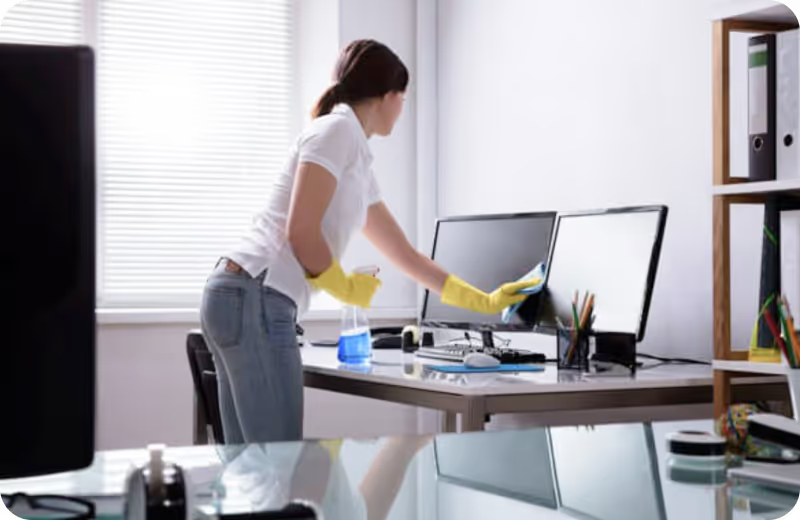
Bathroom mold is always a problem for any homeowner. Bathrooms are moist environments with high humidity, so it’s no wonder that mold and mildew colonies love to grow in these conditions. Uncleaned environments are ideal for mold, as these provide the perfect place for mold to feed and latch onto.
Every homeowner should know that maintaining a proper cleaning schedule is one of the most effective ways to combat mold. Mold grows in small, cramped spaces in your bathroom, like tile grout, corners, and around drains. Identifying what type of mold you have in your home can help you figure out the best way to combat the spores from spreading.

What Is Pink Mold?
Finding pink or rust-coloured spots in your bathroom? Your bathroom may be harbouring some type of pink mold. These spots are unsightly fuzzy or slimy blobs that can present themselves in a variety of colours. However, a pink hue usually means that the mold has been present in your bathroom for quite some time.
Bacteria, Not Mold
Pink mold is the term used to describe species of water-borne bacteria that emits a reddish to pinkish hue. These species are typically colonies of bacteria Serratia marcescens (S. marcescens) or Aureobasidium pullulans (A. pullulans) which take on the appearance of mold, and thrive in moist environments.
These bacteria colonies typically start off as slimy or fuzzy, depending on the species of bacteria, and go from white to light pink or orange, to a reddish rusty colour. Much like any other bacterial species, the bacteria that cause pink mold can pose health hazards, especially when in direct contact with open pores, and towards individuals with compromised immune systems.
Are They Dangerous?
While pink mold can cause bacterial infections, they are often harmless to the healthy individual. However, for individuals that are immunocompromised, often sickly, asthmatic, or with an open wound, the bacteria can pose more serious threats.
The bacteria that causes pink mold can cause bacterial infections like any other type of microorganism. Bathrooms that are littered with pink mold can spread the bacteria to open pores and wounds on the body, and eat healthy tissue.
Pink mold bacteria is especially harmful to children and pets, whose immune systems are not equipped to handle the bacterial infection. Pink mold bacteria can cause Urinary Tract Infections (UTI), respiratory problems, bladder infections, pneumonia, or even septic shock in immunocompromised individuals.

What Causes Pink Mold to Appear on Your Bathroom Surface?
As gross as it sounds, the bacterial species that causes pink mold was most likely brought about through bodily fluids such as urine, pus from infected wounds, or feces. When the bacteria is able to latch onto surfaces through these bodily wastes, they can multiply and grow their colonies.
Pink mold bacteria, much like mold and mildew spores, thrive in moist environments. These bacteria feed off of organic material, such as houseplants, rotting wooden fixtures, and even actual mold. Different bacterial species start off through different surfaces, but all start with a few bacteria in the right conditions to grow colonies.
Serratia marcescens is the most common form of pink mold, and is usually found in dark, damp places around sinks, showers, tiles, and drains. They form when a bacterium finds its way to the area, and starts to feed off of organic matter: dead skin cells, cotton and wood fibers, hair follicles, etc. Serratia marcescens also feeds on oils and phospholipids found in soap scum.

How to Get Rid of Pink Mold
By the time you’ve noticed the colony, the bacteria would have already grown to a sizable concentration. Removing these colonies is an urgent task to keep your bathroom clean, and to prevent the bacteria from infecting your family any more than it already has. To get rid of pink mold from your bathroom, treat the issue like you would any mold colony.
Disinfectant Solution
Bacteria cannot thrive in disinfected environments, so a strong sanitizing solution is your best bet in removing these bacterial colonies. Plenty of disinfectant solutions that inhibit the growth of mold and bacteria in your bathroom are readily available on the market for convenient cleaning. These solutions can be diluted to combat mild pink mold, or used pure for extreme cases.
Disinfectant solutions also double as a preventive solution for mold and bacterial growth of all kinds. Spray a diluted solution of commercial bathroom sanitizer around your shower area, toilet, shower curtains, shower curtain rings, walls, sinks, and floors. Let the solution air dry.
Bleach Solution
Bleach is a powerful cleaning agent that kills off all sorts of pesky mold, mildew, and bacteria. Pink mold would not stand a chance against bleach, so a bleach solution of pure bleach and water in a 1:2 ratio would work wonderfully in removing pink mold. Simply mix the solution in a spray bottle, and spray in areas where mold is present. Wipe clean afterwards.
Make sure not to use bleach on coloured grout, as the solution will whiten the grout. Bleach is also not suitable for unglazed tiles, natural stones like marble and granite, and wooden fixtures. For those materials, best to go with the baking soda solution instead.
Baking Soda Solution
Baking soda inhibits the growth of mold, and destroys bacterial colonies by cutting through their protective lipid layer, weakening their defenses. Mix together baking soda, dishwashing liquid, and water. Apply the mixture to affected areas, like shower curtains, shower curtain rings, sinks, and drains. Let the solution sit for about 10 minutes.
Grab a scrub brush, and start scrubbing away the mold until all the colonies have been removed. Rinse off the solution with some warm water, and apply a layer of commercial biocide to prevent the pink mold bacteria from forming more colonies.

How to Prevent Pink Mold From Coming Back
Once you get rid of existing pink mold, the next challenge is preventing them from coming back. The bacteria that causes pink mold love to get into fabrics like the shower curtains, shower curtain liner, and any carpeting you have around the area. Towels, too, can harbour pink mold bacteria, which is why you will need to wash these fabrics frequently.
To prevent pink mold from coming back, your best defense would be a disinfectant spray or a biocide that will kill off any bacterium or spores before they settle into the nooks and crannies of your bathroom. Spraying one of these solutions weekly keeps mold and bacteria at bay, and cleans off your bathroom from any pathogenic bacteria.
Keeping Your Bathroom Clean and Spotless
For a truly thorough cleaning, get in touch with a professional cleaning company that can get rid of those pink mold for you, and bring the shine back to your bathroom. Luce is a top-notch cleaning service company and our expert cleaners specialize in removing all types of dirt and mold from your home.
Give us a call, send us an email, or send us a WhatsApp today, and we can schedule you for a full top-to-bottom cleaning service by our part time maids Singapore - satisfaction guaranteed!


























